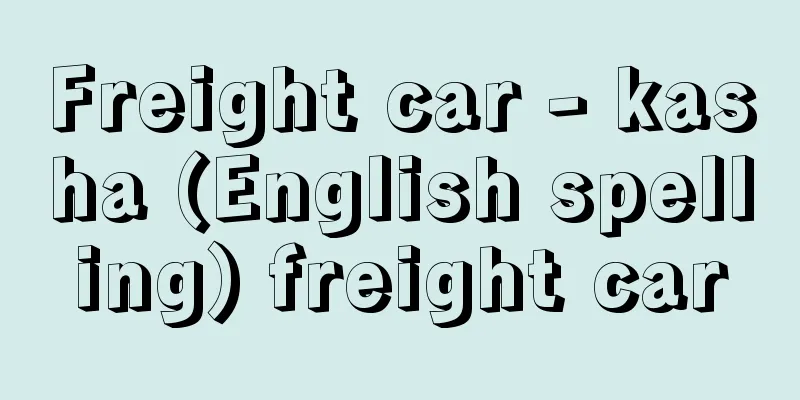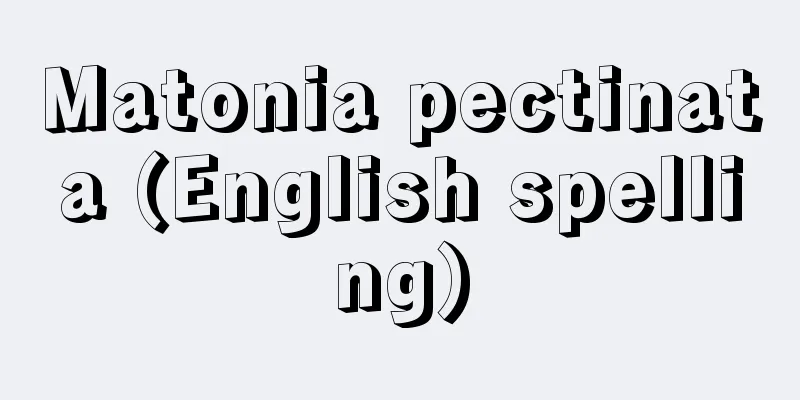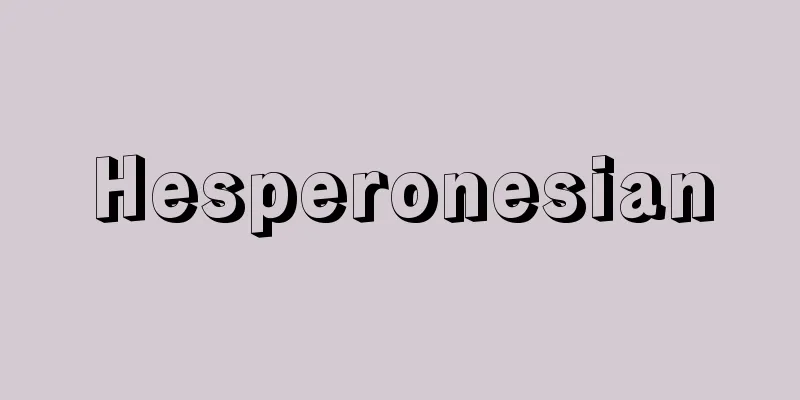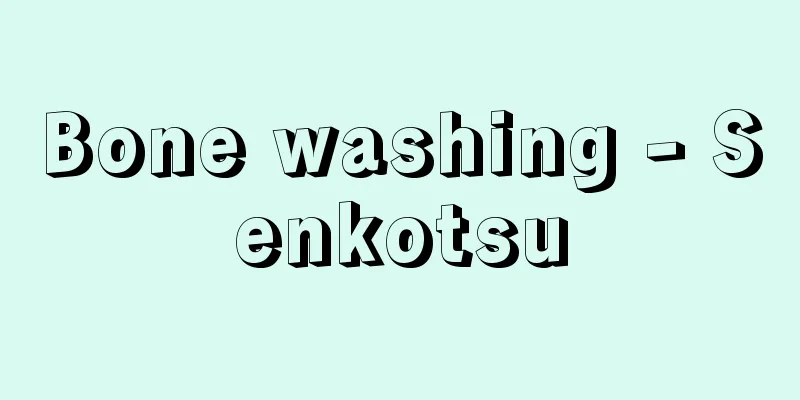Freight car - kasha (English spelling) freight car

|
A general term for railroad cars that are primarily used to transport freight. There are general-purpose freight cars that do not limit the type of freight they can carry, and specialized freight cars that are suitable for transporting specific goods. [Gentaro Nishio] Structural Classification(1) Covered freight cars: As specialists call them, covered freight cars have a box-shaped body and are used for cargo that cannot be allowed to get wet. Typical covered freight cars are general-purpose covered freight cars marked with the symbols "Wam" or "Waki." The symbol "Wa" comes from the English word "waggon." They have sliding doors on the sides, allowing cargo to be loaded and unloaded, and are designed to be locked and sealed to prevent theft and other accidents during transport. Other covered freight cars include refrigerated cars (Re), ventilated cars (Tsu), and livestock cars (Ka). Covered freight cars are sometimes used for specialized purposes these days, such as for pallet loading (in which case, cars with sliding doors on all sides are used), and there are many of these specialized freight cars. (2) Open freight car Generally, this is a general term for freight cars that transport rough materials that can get wet, but sometimes they are covered with a sheet to prevent them from getting wet or spilling. A typical open freight car is one with a tiger or ibis symbol. The symbol "To" comes from the English word "truck" ("torokko" in Japanese). In the past, it was widely used to carry coal, ore, machinery, vehicles, etc., but now this type of freight is often transported by specialized freight cars that are suitable for each type of freight. There is also a flat freight car (symbol "Chi") that has an open floor only. The symbol "Chi" comes from the English word "timber" and was mainly used to transport large round timber. Nowadays, long objects are welded together with rails for railways and transported in a long freight car that is made up of several cars connected together. Rails have a flexibility in the lateral direction, so they can be used to travel on curved roads. Although they are rare in Japan, in the United States and other countries, high side waggons and bulk headed cars, which are specially designed for carrying bulky goods, are used for a wide range of purposes. (3) Hopper car In Japan, this type of freight car was previously classified as an open freight car, but with the advancement of logistics technology, hopper-type freight cars became more widespread and were added to the general category. The structure is a funnel-shaped body, wider at the top and narrower at the bottom by a sloping wall, making it convenient to load goods from the top and remove them from the bottom. The symbol is "hoki". The cargo items are used to transport so-called powdered materials such as coal, bulk (transported without packaging), cement, limestone, and feed. Those for coal are especially called coal cars (symbol Se) and are closer to the category of open freight cars without a canopy. On the other hand, hopper freight cars for transporting feed are designed with a canopy that seals the top because they do not like to get wet. The lid of the inlet on the roof is opened, and powdered materials are loaded from the top by gravity or pressure from a silo facility next to the track. In the United States and other countries, flour and grains are generally transported in this type of hopper freight car, but in Japan, due to the distribution system, bulk transportation is almost never done. However, beer malt is transported in a hopper freight car. Coal cars are often transported in large quantities from coal-producing areas to port facilities on dedicated trains (piston trains), so port terminals often have car dumper facilities that rotate the loaded coal cars to rapidly remove the coal and drop it into a coal storage area under the elevated tracks. Car dumper facilities were previously installed at Otaru Port in Hokkaido, Muroran Port, and Wakamatsu Port in Kyushu. In the United States, there is a demand for even larger hopper freight cars, so there are unloading facilities with specially designed automatic couplers for freight cars that have rotary couplers that can rotate around the neck as an axis, and which rotate the freight cars when they reach the designated position while still in the train to which they are coupled. (4) Tank car A freight car used to transport liquid cargo such as petroleum or caustic soda, and generally consists of a sealed cylindrical tank. It is symbolically called Taki. A typical example is a tank car. A tank car used to transport water is a water tank car (symbolized Mi). Some tank cars transport highly flammable cargo such as gasoline or chemicals, so careful consideration is given to the design and operation of the car, particularly in terms of preventing derailment, impact, and induced fires. [Gentaro Nishio] New uses and freight carsWith recent changes in distribution mechanisms, many specialized freight cars with special structures have appeared. A typical example is the freight car for transporting automobiles (symbol: K). Previously, transportation was done using flat cars, but with this type, passenger cars or small trucks are stacked two high and run lengthwise along the length of the train, and are loaded and unloaded. Each loaded automobile is secured with a fastening device. They are used for the purpose of delivering automobiles from automobile production plants to dealers in various cities, or for transporting large quantities to ports for export. On American railroads, three-high stacking is the norm, and a recent feature is the style of covered freight car (with a through-type end) to prevent automobiles from being damaged during transportation. With the development of container transport, container freight cars, which are flat freight cars that have been improved specifically to carry containers, tend to be classified separately. In Japan, 5-ton containers are standardized for rail transport, and container cars (symbolized as "K") that can carry five containers are mainly used. In the United States, marine containers (40 feet or 20 feet long) are usually transported by rail or freight car, and container cars that can carry two or one of these large containers continue to improve technologically as demand increases. Piggyback, in which road van trailers (also up to 40 feet long) are directly loaded onto flat freight cars, has become the mainstream of rail freight transport in the United States. Kangaroo-style freight cars, in which the wheels of the van trailer are dropped into the floor of the flat freight car through a bag, are widespread on European railroads. In Japan's railways, other business vehicles that are neither locomotives nor passenger cars are classified as freight cars. For example, there is the caboose (symbolized as Yo). Structurally it belongs to the category of covered freight cars, but in terms of use it is a business vehicle. Other business freight cars include snowplows (such as russells and rotary cars) and shunting cars (symbolized as So), which are equipped with cranes. Traditionally, shunting cars were mainly used for recovery work after derailments, but recently they are also used for construction work such as building bridges and laying tracks. In Japan and European countries, freight cars used to have a load capacity of 10 tons or 20 tons, and most of them were two-axle freight cars. However, since the 1970s, the capacity has increased to about 30 tons (50 tons in Europe), and two-axle bogie freight cars have become more common in order to increase the speed and running stability of freight trains. The freight cars of the United States, Russia, Australia, China, and South Africa, which are continental countries and transport large amounts of resources, are large, with some having a load capacity of up to 100 tons per car. In addition, freight trains themselves are long formations called one-mile trains. In addition, cars that are attached to passenger trains and transport small packages or mail are classified as passenger cars and are not called freight cars, even if they have a structure similar to that of freight cars. [Gentaro Nishio] "Japanese National Railways Operations Bureau, Vehicle Management Division, 'Passenger and Freight Car Related Regulations Handbook' (1983, Koyusha)" ▽ "Hiroshi Kubota, 'Railway Vehicle Handbook' (1997, Grand Prix Publishing)" [References] | | | | | | [Supplementary information] | |Source: Shogakukan Encyclopedia Nipponica About Encyclopedia Nipponica Information | Legend |
|
主として貨物の輸送に役だてる鉄道車両の総称。積載する貨物品種を限定しない一般用貨車と物資別輸送に適合した専用貨車がある。 [西尾源太郎] 構造上の分類(1)有蓋(ゆうがい)貨車 取り扱う専門者たちからヤネ車(しゃ)とよばれるように、箱形の車体をして、積載品がぬれては困るものに使用される。代表的な有蓋貨車としてはワムとかワキの記号の付してある一般用有蓋車がある。ワという記号は英語のワゴンwaggonからつけられた。側引き戸が設けてあり、貨物の出し入れと、錠および封印をして輸送中の盗難その他の事故を防止する構造になっている。このほか冷蔵車(レ)、通風車(ツ)、家畜車(カ)なども有蓋貨車に属する。有蓋貨車でも最近は専用貨車として使用される場合もあり、たとえばパレット積み専用(この場合は側面全部を引き戸構造としたものが用いられる)で、この種の専用貨車が多くなっている。 (2)無蓋貨車 一般に、ぬれてもかまわない粗い素材を輸送する貨車の総称であるが、ぬれや荷こぼれを防ぐためにシートを上掛けする場合もある。代表的な無蓋貨車としてはトラとかトキの記号のある貨車である。トという記号は英語のtruck(日本語化したトロッコ)からきたものである。以前は石炭、鉱石、機械、車両などの積載に広く使用されていたが、この種の貨物もそれぞれに適合する専用貨車によって輸送されることが多くなった。そのほかに平(ひら)貨車とよばれる囲いのない床面だけの構造の長物車(ながものしゃ)(記号チ)がある。チという記号は英語のtimber(木材)に由来し、主として大きな丸木材を輸送するのに使用された。現在は、鉄道用のレールで溶接して長尺物になったものをそのまま、何両も連結した長物車で輸送する。レールは横方向に柔軟性がある弾性を利用して曲線路通過も可能である。日本には少ないが、アメリカなどでは、高側壁貨車high side waggonとか嵩高(かさだか)品専用貨車bulk headded carなどが広い用途で使われている。 (3)ホッパー貨車hopper car 日本ではこの種の貨車は以前は無蓋貨車の範疇(はんちゅう)に入れていたが、物流技術の進歩に伴ってホッパー方式の貨車の普及が拡大して大類別の一つに加わった。構造としては漏斗(ろうと)状の車体で、上部が広く下部は傾斜壁面によって狭まり、品物を上部から積載して底部から取り出すのに便利である。記号としてはホキなどがつけられている。積載用品としては、石炭、ばら積み(包装しないで輸送すること)セメント、石灰石、飼料など、いわゆる粉粒体の輸送に供する。石炭用のものはとくに石炭車(記号セ)とよばれ、天蓋のない無蓋貨車の範疇に近いものである。一方、飼料を輸送するホッパー貨車はぬれを嫌うので上部も密閉する天蓋付きの構造になっている。屋根部に設けられた注入口の蓋(ふた)を開いて線路わきにあるサイロ設備から重力または圧送によって上部から粉粒体の積載を行う。アメリカなどでは小麦粉、穀類などもこの種のホッパー貨車で輸送されるのが原則であるが、日本では流通機構上ばら積み輸送がほとんど行われていない。ただし、ビール麦芽だけはホッパー貨車で輸送されている。 石炭車は、産炭地から港湾設備まで専用列車で大量一貫輸送(ピストン列車)することが多いので、港湾終端駅には、積載したままの石炭車を回転して急速に石炭を取り出し、高架線路下部に設けた貯炭場に石炭を落下させるカーダンパー設備を有することが多い。以前は北海道の小樽(おたる)築港、室蘭(むろらん)港、九州の若松港にカーダンパー設備を有していた。アメリカではさらに大がかりなホッパー貨車需要があるので、貨車の自動連結器を特殊構造として、頸部(けいぶ)を軸として回転できるロータリーカップラーを有し、貨車が連結した列車在姿のままで所定位置にくると貨車を回転する荷卸し設備もある。 (4)タンク貨車tank car 石油やカ性ソーダなどの液体状の貨物を輸送する貨車で、一般に車体が密閉筒状のタンクで構成されている。記号としてはタキなどとよばれている。その代表的なものはタンク車である。水を輸送する目的のタンク貨車は水槽車(記号ミ)である。タンク車はガソリンとか化学薬品など引火性の強い貨物を輸送するものがあるので、とくに脱線事故防止、衝撃防止、誘引火災防止など、車両設計や運転取扱いの面で細かい配慮が行われる。 [西尾源太郎] 新しい用途と貨車最近の流通機構の変化に伴って、特殊な構造の物資別適合専用貨車が多く登場してきている。その代表的な例は自動車輸送用貨車(記号ク)である。以前は長物車で輸送していたが、これは乗用自動車あるいは小型トラックを2段積みにして列車の長さ方向に縦に積み走行、積み卸しするものである。積載された各自動車は緊定装置で固定される。自動車生産工場から各都市のディーラーに配送、あるいは輸出のために港まで大量輸送する目的で使用される。アメリカの鉄道では3段積みが普通で、また輸送中に自動車が破損事故を生じないように有蓋貨車(妻(つま)部は貫通式)のスタイルになっているのが最近の特徴である。 コンテナ輸送の発達に伴って、平貨車をコンテナ積載専用に進歩改良させたコンテナ貨車が独立して類別される傾向になっている。日本では鉄道用としては5トンコンテナが標準化されて、5個積載のコンテナ車(記号コ)が主として使用されている。アメリカでは海運用のマリンコンテナ(長さ40フィート=12.2メートル、あるいは20フィート=6.1メートル)を陸上では鉄道あるいは貨物自動車で運ぶのが通例であり、この種の大型コンテナを2個あるいは1個積載するコンテナ車が需要の増大とともに技術的にも進歩改良を続けている。道路用のバントレーラー(これも40フィートの長さまである)をそのまま平貨車に積載するピギーバックpiggy backが、アメリカの鉄道貨物輸送の本流となった。ヨーロッパ諸国の鉄道では、バントレーラーの車輪脚部を平貨車の床に袋部分を設けて落とし込む設計のカンガルー方式貨車が普及している。 日本の鉄道では、機関車でも旅客車でもないその他の事業用車両を貨車の範疇に入れている。たとえば車掌車(記号ヨ)がある。構造上からは有蓋貨車に属しているが、用途上からは事業用車両である。そのほか、事業用の貨車としては雪かき車(ラッセル車とかロータリー車など)、クレーンを装備した操重車(記号ソ)がある。操重車は従来、脱線事故復旧作業用が主であったが、最近では架橋や線路敷設などの建設工事用にも使われる。 日本やヨーロッパ諸国の貨車は従来10トンないし20トンの積載荷重のものが主で、2軸貨車が多かった。しかし1970年代以降は30トン(ヨーロッパでは50トン)程度の大単位になってきたことと、貨物列車速度向上と走行安定性向上のために2軸ボギー貨車が多くなった。大陸国でありかつ大量の資源輸送を行っているアメリカ、ロシア、オーストラリア、中国、南アフリカ共和国などの鉄道の貨車は大型であり、1両の積載荷重が100トンに及ぶものがある。また貨物列車そのものも、ワンマイルトレーンとよばれるような長大編成が運転されている。 なお、旅客列車に連結される手小荷物や郵便を輸送する車両は、たとえ貨車に似た構造であっても、旅客車の範疇に入れて、貨車とはよばない。 [西尾源太郎] 『日本国有鉄道運転局車務課監修『客貨車関係法規便覧』(1983・交友社)』▽『久保田博著『鉄道車両ハンドブック』(1997・グランプリ出版)』 [参照項目] | | | | | | [補完資料] | |出典 小学館 日本大百科全書(ニッポニカ)日本大百科全書(ニッポニカ)について 情報 | 凡例 |
>>: Kashimo [village] - Kashimo
Recommend
Esfahān (English spelling)
...Population: 1.22 million (1994). The correct p...
Night Sky Light
This refers to the natural light from the night sk...
gooseberry
...The genus Gooseberry, which has about 150 spec...
Building physical strength - building strength
Intentionally improving physical abilities such as...
barramunda
…It lives in the rivers of Queensland, Australia....
Jean de Boulogne (English spelling)
…A representative Mannerist sculptor from Flander...
Cultivation in soil - Koudobaiyo
This is a new term that means to cultivate and nou...
Aenictus
…General term for ants belonging to the family Fo...
Jakuren - Jakuren
Year of death: Around 20th July 1202 (9th August 1...
《Sea Red》 - Kaikou
...This was the beginning of the free-style haiku...
Fida'i (English spelling)
An Arabic word meaning "one who sacrifices hi...
Hatsushima
An island in Sagami Bay, the easternmost part of S...
Urakami Mune - Urakami Mune
Year of death: 4th June 1531 (17th July 1531) Year...
Equine Infectious Anemia - Equine Infectious Anemia
A septicemic disease caused by a virus that infect...
Kramer, PL
...However, from the viewpoint of architectural t...









